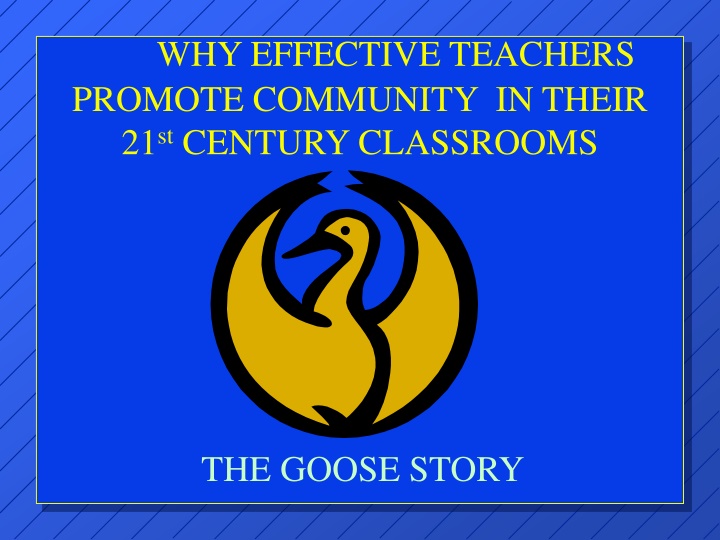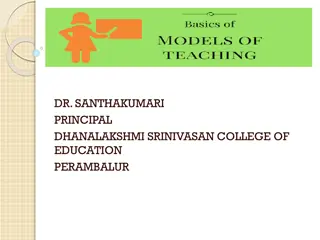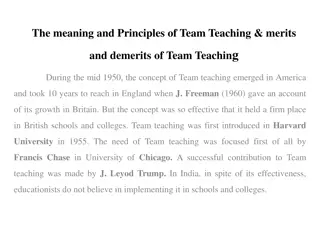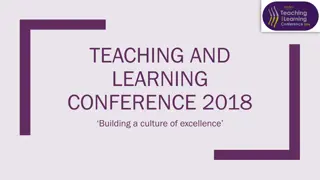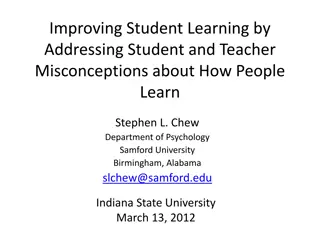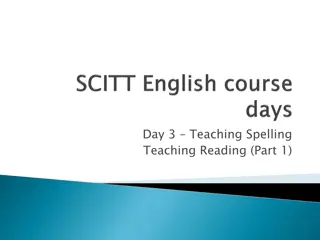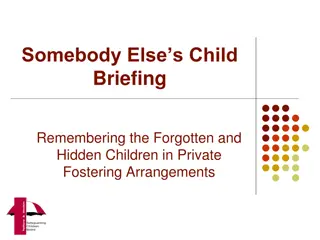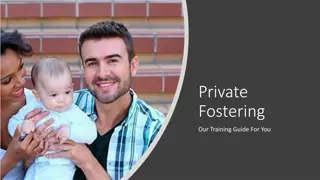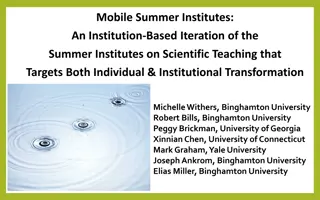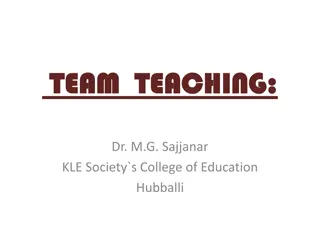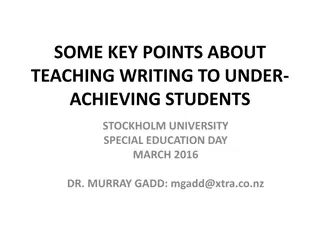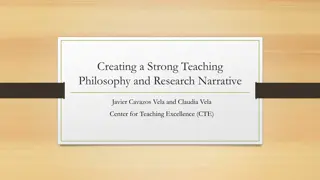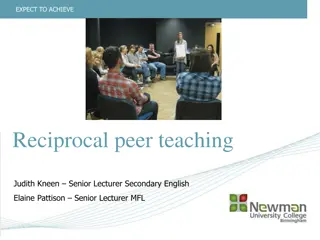"Fostering Community Through Effective Teaching"
Teachers play a pivotal role in creating a sense of community in modern classrooms. The story of the goose illustrates how effective teaching methods can promote collaboration, support, and a shared learning environment. By fostering a strong community within the classroom, teachers can enhance student engagement, encourage positive interactions, and ultimately cultivate a conducive space for 21st-century learning.
Download Presentation

Please find below an Image/Link to download the presentation.
The content on the website is provided AS IS for your information and personal use only. It may not be sold, licensed, or shared on other websites without obtaining consent from the author.If you encounter any issues during the download, it is possible that the publisher has removed the file from their server.
You are allowed to download the files provided on this website for personal or commercial use, subject to the condition that they are used lawfully. All files are the property of their respective owners.
The content on the website is provided AS IS for your information and personal use only. It may not be sold, licensed, or shared on other websites without obtaining consent from the author.
E N D
Presentation Transcript
WHY EFFECTIVE TEACHERS PROMOTE COMMUNITY IN THEIR 21stCENTURY CLASSROOMS THE GOOSE STORY
One day--lying alone in the lawn on my back with only the drone of a distant train on some far-off track, I saw before my eyes, 5,000 feet high or more, a sight--which to this day I must say, I ve seen nothing like before.
The head goose--the leader of the V-- suddenly veered out, leaving a vacancy which was promptly filled by the bird behind. The former leader then flew alongside the formation continued growing wide-- and he found a place at the back of the line. They never missed a beat!
So thats how I found out how the goose can fly from way up North to way down South and back again. But he cannot do it alone you see. It s something he can only do in Community.
These days its a popular notion, and people swell with emotion and pride to think of themselves on the eagle s side, Solitary Self Sufficient But, We are what we are, that s something we cannot choose. Strong
And though many would wish to be seen as the eagle, I think God made us more like the goose.
THE GOOSE STORY Next fall when you see geese heading south for the winter flying along in a V formation, you might be interested in knowing why they fly that way. It has been learned that as each bird flaps its wings, it creates an uplift for the bird immediately following. By flying in a V formation, the whole flock adds at least 71% greater flying range than if each bird flew on its own.
People who share common direction and sense of community can get where they are traveling on the thrust of one another.Whenever a goose falls out of formation, it suddenly feels a drag and resistance of trying to go it alone, and quickly gets into formation to take advantage of the lifting power of the bird immediately in from. If we have as much sense as a goose, we will stay in formation with those who are headed the same way we are going.
When the lead goose gets tired, he rotates back in the wing and another goose flies to point. It pays to take turns doing hard jobs. The geese honk from behind to encourage those up front to keep up their speed.. An encouraging word goes a long way Finally, when a goose gets sick, or is wounded by a gun shot and falls out, two geese fall out of formation and follow him down to help and protect him.
They stay with him until he is either able to fly or until he is dead, and they launch out on their own or with another formation to catch up with the group. If we have the sense of a goose we will stand by each other like that.
WHY IS A POSITIVE LEARNING COMMUNITY IMPORTANT? Higher order thinking is woven into every lesson Students see value in working together Social skills are taught, valued and assessed. Students acquire knowledge of different team roles as the are shared and mixed Students acquire flexibility in thinking and other positive habits of mind Other??
HOW DO YOU BEGIN TO BUILD COMMUNITY? Begin by immediately creating a positive learning culture Create an ethic of caring in the classroom Use warm-ups, culture circles at some point every day Seek out student voice; Ask them what kind of classroom they want to have Teach social skills explicitly
HOW DO YOU SUSTAIN AND NORM POSITIVE CLIMATE IN YOUR CLASSROOM? USE COOPERATIVE LEARNING GROUPS AS MUCH AS POSSIBLE: Class Members share responsibility for the group and the health of their learning community Students learn to rely on each other Students progress in their use of pro- social skills and habits of mind
T-CHART ATTENTIVE LISTENING LOOKS LIKE SOUNDS LIKE FEELS LIKE
T-CHART ON TEAM BUILDING LOOKS LIKE SOUNDS LIKE FEELS LIKE
SOCIAL SKILLS WE NEED TO TEACH IN COOPERATIVE LEARNING FORMATION OF GROUPS SUPPORT COMMUNICATION CONFLICT RESOLUTION
FORMATION OF GROUPS FORM GROUPS QUIETLY SIT EYEBALL TO EYEBALL MAKE EYE CONTACT USE EACH OTHER S NAMES SHARE MATERIALS FOLLOW ROLE ASSIGNMENTS
SUPPORT CHECK FOR UNDERSTANDING OFFER YOUR HELP ASK YOUR GROUP FIRST FOR HELP IF YOU DON T UNDERSTAND
SUPPORT ENCOURAGE EACH OTHER ENERGIZE THE GROUP DISAGREE WITH THE IDEA- NOT THE PERSON
COMMUNICATION USE 6-INCH VOICES TAKE TURNS MAKE SURE EVERYONE SPEAKS WAIT UNTIL SPEAKER IS FINISHED BEFORE YOU SPEAK
CONFLICT RESOLUTION DISAGREE WITH THE IDEA- NOT THE PERSON RESPECT THE OPINIONS OF OTHERS THINK FOR YOURSELF
CONFLICT RESOLUTION EXPLORE DIFFERENT POINTS OF VIEW NEGOTIATE AND/OR COMPROMISE REACH CONSENSUS
ASSESS YOUR GROUP ONE THING WE DID WELL . . . ONE THING WE COULD DO BETTER ON . . . SOCIAL SUPPORTING SKILLS COMMUNICATING SKILLS CONFLICT SOLVING SKILLS ON A 1 (HIGH) TO 5 (LOW) SCALE OUR GROUP IS A ___.
